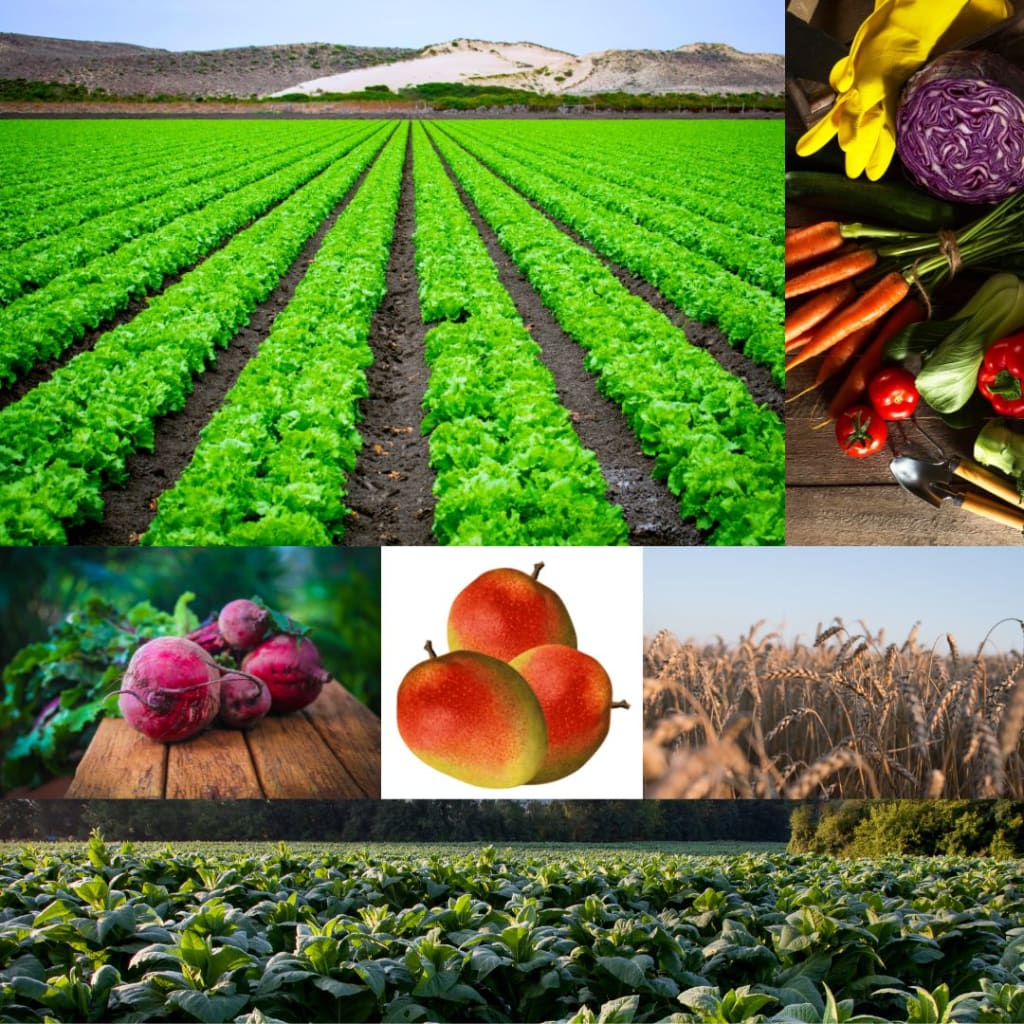Regenerative Agriculture
Let's Cultivate Hope!

Introduction:
In the face of environmental challenges and the need for sustainable practices, regenerative agriculture has emerged as a beacon of hope. This innovative approach to farming goes beyond mere sustainability, aiming to restore and regenerate the health of our ecosystems while nurturing the well-being of farmers and communities. In this article, we will explore the profound impact of regenerative agriculture, its principles, and the transformative potential it holds for our planet and future generations.
The Essence of Regenerative Agriculture:
Regenerative agriculture is a holistic land management approach that seeks to rejuvenate soil health, enhance biodiversity, and sequester carbon, all while producing nutritious and abundant food. It is rooted in a deep understanding of natural ecosystems and employs regenerative practices that work in harmony with nature's cycles. By focusing on soil health, regenerative agriculture aims to rebuild degraded soils, improve water retention, and restore the natural balance of microorganisms.
Principles of Regenerative Agriculture:
Building soil health: Regenerative agriculture emphasizes the importance of nurturing living soils teeming with microorganisms, fungi, and beneficial insects. Practices such as cover cropping, composting, crop rotation, and minimal tillage help replenish organic matter, increase soil fertility, and enhance its ability to sequester carbon.
Enhancing biodiversity: By creating diverse habitats and preserving natural areas, regenerative agriculture promotes the return of beneficial insects, birds, and other wildlife. This biodiversity acts as a natural pest control system, reducing the reliance on harmful chemicals.
Managing water wisely: Regenerative agriculture employs practices that optimize water use, such as contour plowing, agroforestry, and the use of mulch. These techniques help prevent soil erosion, improve water infiltration, and conserve water resources.
Promoting animal welfare: Integrating livestock into regenerative agriculture systems can bring multiple benefits. Properly managed rotational grazing allows for natural fertilization of the soil, improves pasture health, and enhances the overall ecological balance.
The Transformative Power of Regenerative Agriculture:
Climate change mitigation: Regenerative agriculture has the potential to play a vital role in mitigating climate change. By sequestering carbon in the soil through practices like cover cropping and agroforestry, it helps to reduce greenhouse gas emissions and counterbalance the effects of industrial agriculture.
Soil regeneration and resilience: Regenerative practices foster soil regeneration, leading to increased nutrient density in crops, improved water retention, and reduced soil erosion. This not only enhances food quality but also strengthens the resilience of agricultural systems to droughts, floods, and other climate-related challenges.
Sustainable food production: Regenerative agriculture promotes the production of nutrient-rich, chemical-free food, prioritizing the long-term health of both consumers and the environment. By shifting away from monocultures and synthetic inputs, it supports more diverse and resilient food systems.
Economic and social well-being: Regenerative agriculture creates opportunities for small-scale farmers, fosters community engagement, and strengthens local economies. By prioritizing the well-being of farmers and promoting fair trade practices, it contributes to a more equitable and sustainable food system.
Water conservation and quality: Regenerative agriculture practices, such as agroforestry and riparian buffers, help protect water bodies from pollution and excessive nutrient runoff. By minimizing the use of synthetic fertilizers and pesticides, regenerative agriculture reduces water contamination, preserves aquatic ecosystems, and supports clean drinking water sources.
Conclusion:
Regenerative agriculture represents a paradigm shift in how we approach farming and land management. With its focus on soil health, biodiversity, climate change mitigation, and sustainable food production, this transformative approach holds immense potential for creating a regenerative and resilient future. By embracing regenerative agriculture, we can not only restore the health of our ecosystems but also foster economic vitality, social well-being, and a more sustainable relationship between humans and nature. Let us join hands in cultivating hope and embracing the transformative power of regenerative agriculture for the benefit of our planet and generations to come.
About the Creator
Ivana C. Ivana
Grab a cup of coffee, get comfortable, and embark on a journey of interesting reads, informative guides and mind-blowing ideas. Happy reading!






Comments
There are no comments for this story
Be the first to respond and start the conversation.